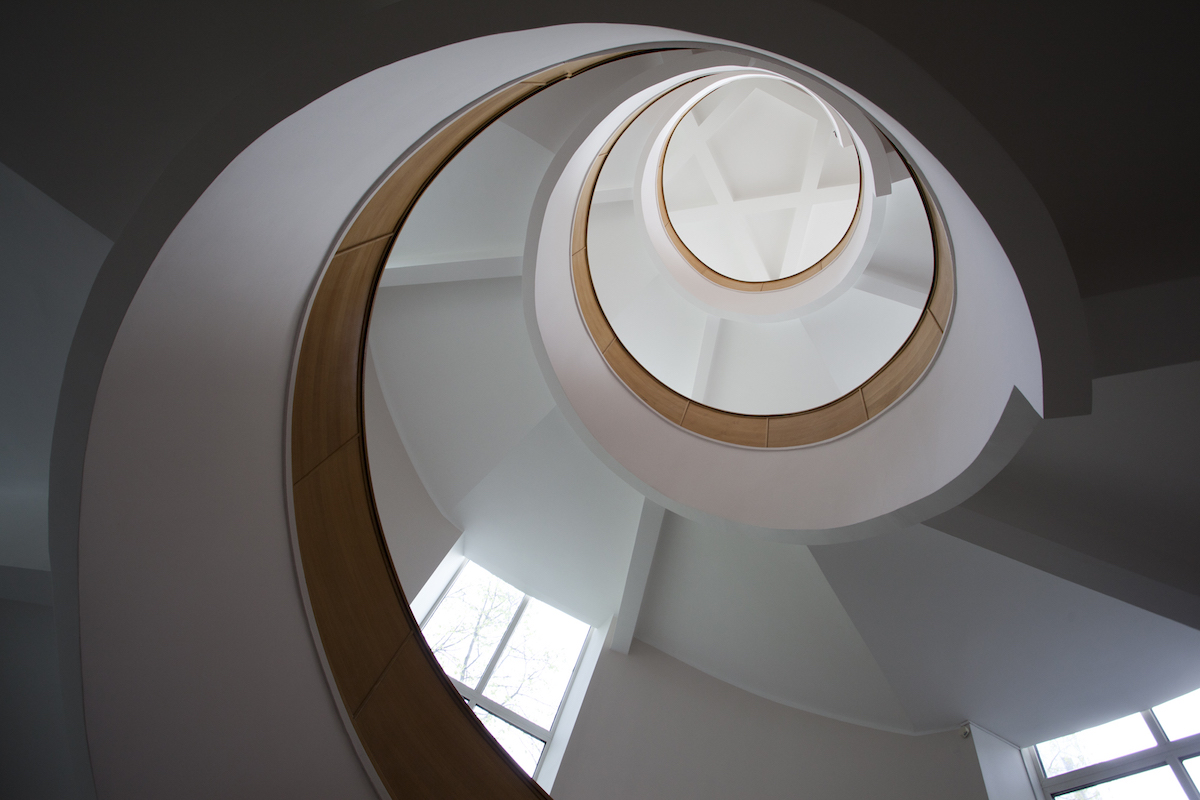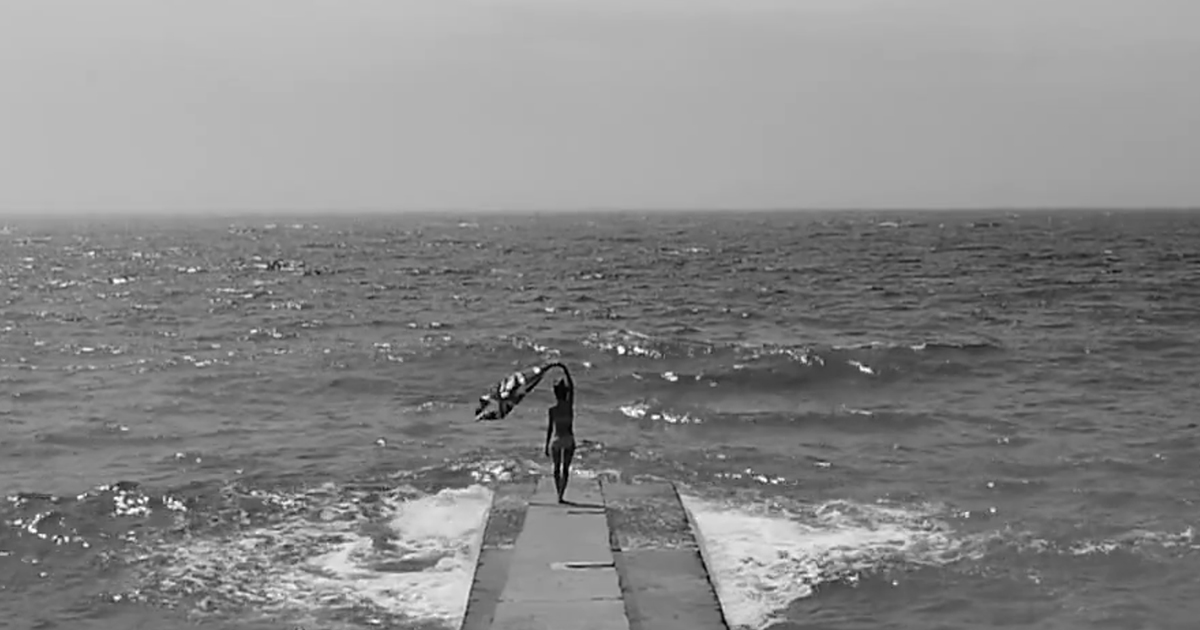Radical geometry: artists’ reflections on Kazimir Malevich
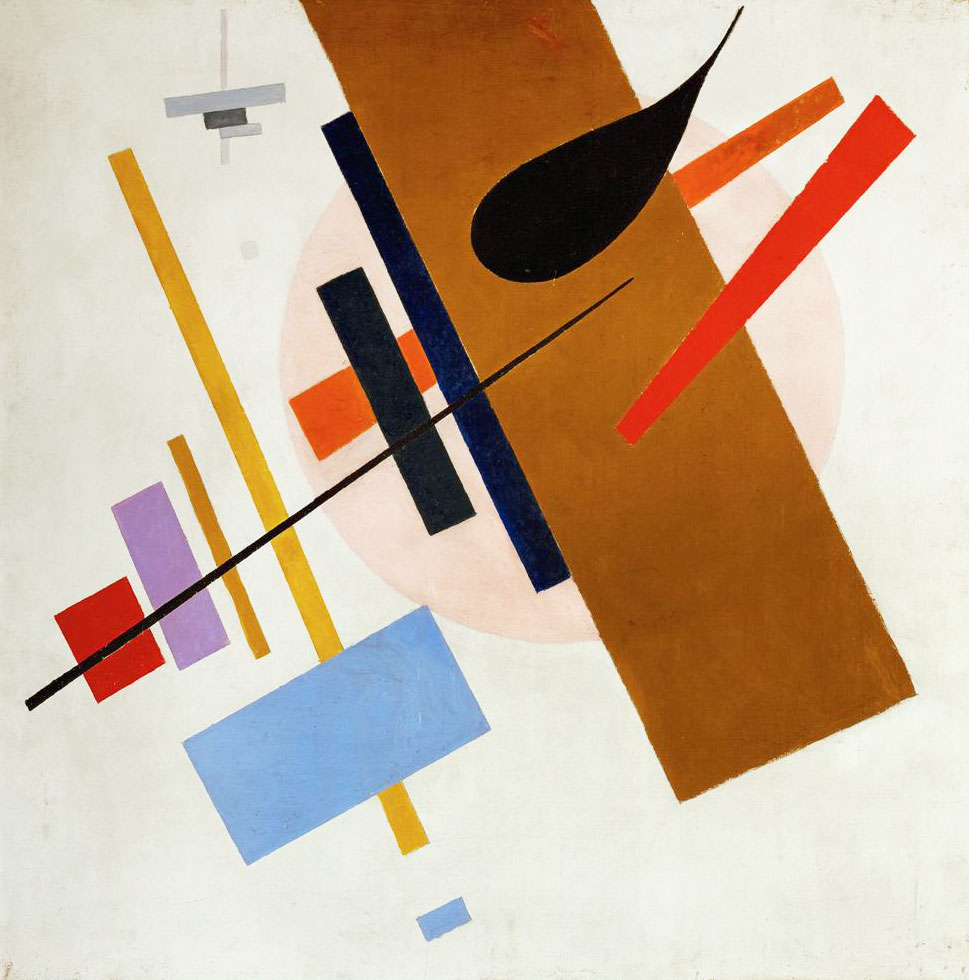
Four artists — Ilya Kabakov, Paulina Olowska, David Diao and Yuko Shiraishi — write about how the modernist icon, Kazimir Malevich, has influenced their work
Kazimir Malevich’s (1879-1935) Black Square (1915), one of the most revolutionary paintings in the 20th century, still confounds viewers. The black square in a white border broke new ground simply because of its bold suggestion that anything could be deemed art. The painting epitomises Suprematism, a style of painting invented by Malevich which favoured geometrical forms in place of representative images. In tribute to the revolutionary painter, London’s Tate Modern has organised a retrospective of his work, with paintings gathered from Russia, the US and Europe. The exhibition is the artist’s first in 30 years and the first ever in the UK. To mark the event, Tate Etc, Tate Modern’s magazine, asked a selection of artists from around the world to comment on how Malevich has inspired their work. A handful of their responses are published below.
Malevich: Revolutionary of Russian Art is at London’s Tate Modern from 16 July to 26 October
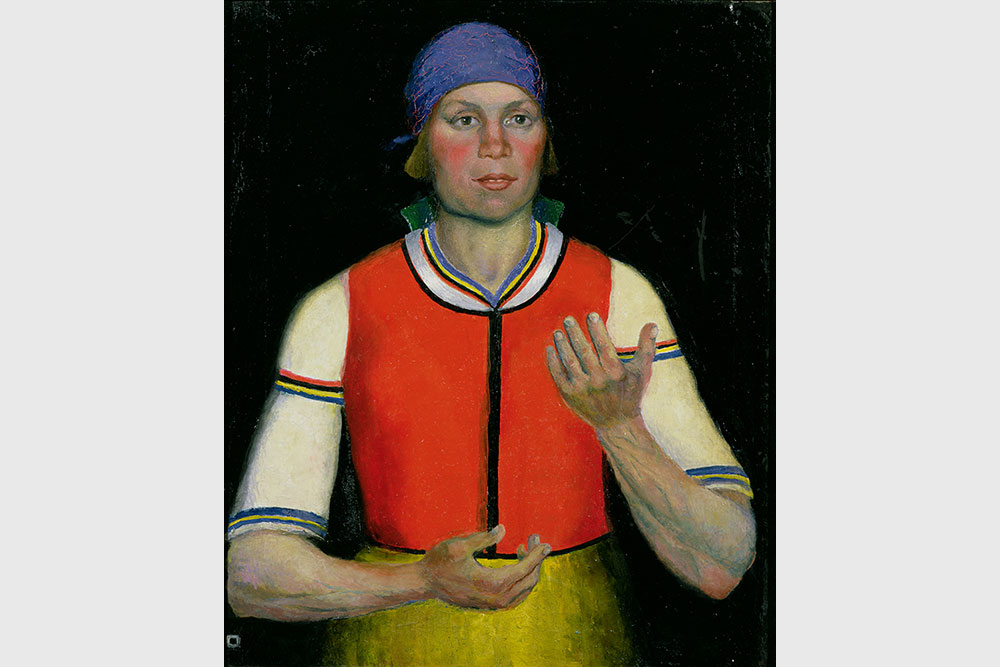
Kazimir Malevich, Female Worker (1933)
Ilya Kabakov
It seems to me that anyone would find the hand gesture of the character in Malevich’s Female Worker (1933) incomprehensible and frankly puzzling. Judging from the title of the painting and the face of the woman herself, it would appear to suggest something connected with production, but the positioning of both hands cannot be associated with any craft. Nonetheless, the gesture is portrayed very precisely and demonstratively, and clashes with the simple, neutral depiction of her “work-weary” hands. My hypothesis is that the pose would be perfectly natural in a picture of a mother holding her child. You have only to let your imagination overlay the Madonna and Child on this painting for the inference to become obvious. If I am correct, then Malevich’s portrait becomes a most profound image because of its tragic nature — the depiction of a mother who has had her child taken away. Given this interpretation, the work ceases to be a concession by the great experimenter to the new circumstances of life and takes on the significance of an absolute sign, a symbol of what was going on around him during those years, an image no less powerful and terrible than Black Square (1915).
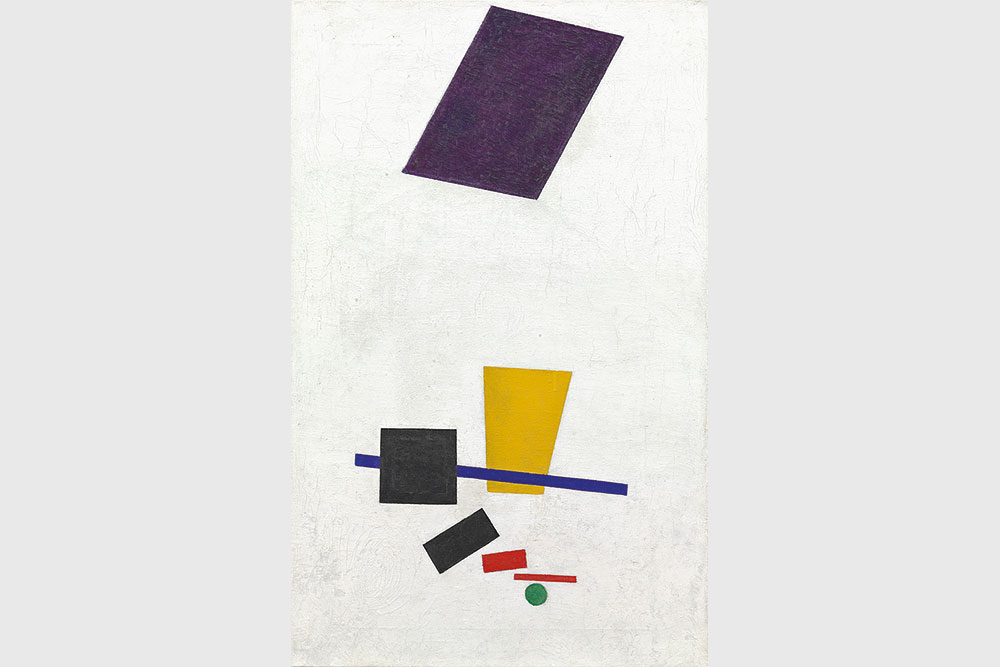
Kazimir Malevich, Painterly Realism of a Football Player - Colour Masses in the 4th Dimension (1915)
Yuko Shiraishi
Kazimir Malevich depicted space without horizon, no up and no down. His interest in science and mysticism, which can be seen in paintings such as Painterly Realism of a Football Player – Colour Masses in the 4th Dimension (1915), meant that he developed a curiosity for space flight. His association with aviation made him see gravity as a force of attraction in all directions through space. As a result, he would occasionally invert and change the hanging of his own paintings at different exhibitions. I feel my installation Space Elevator, Tea House (2009) shares his idea of no gravity and different dimensions. The architectural element is the tea house and the space elevator is the important aspect of flight, which mirrors Malevich’s paintings that embody his wish to fly, as do his architectural projects.
Malevich said: “The emotions which are kindled in the human being are stronger than the human being himself. The square is not a subconscious form. It is the creation of intuitive reason… In the last analysis, what each individual knows about himself is precious little, because the ‘actual human face’ cannot be discerned behind the mask, which is mistaken for the ‘actual face’.” He expressed this idea with Suprematism and used abstract art like a new language. I created an installation called Women in Landscape – Women in Many Worlds (2010) using Malevich’s drawing Female Figure with Black Face (1930–1932) and the work of physicist Hugh Everett, who came up with the Many Worlds Theory, to show the resonance between scientific exploration and the realms of mysticism. Malevich also merged ideas of science and mysticism through abstraction and form. He did this to evoke emotional responses that he believed to be so powerful in humans and to portray complex ideas through beauty and emotion. This is an aim I share in my work.
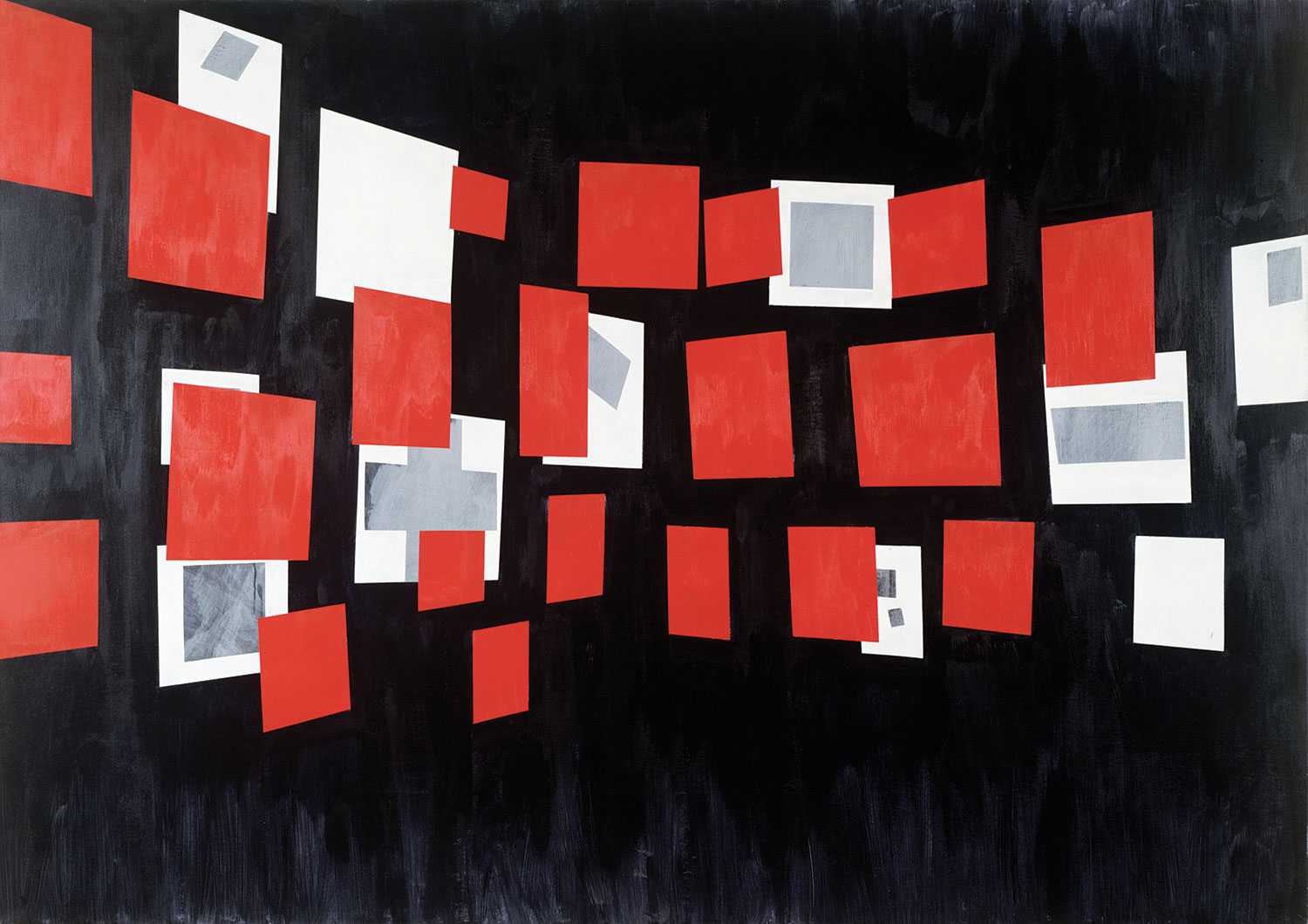
David Diao, Glissement (1984)
David Diao
Malevich’s paintings were always on view at the Museum of Modern Art, New York. But who noticed? We were mostly enthralled by the likes of Pollock and Newman. The Malevichs and other European art were simply too tiny to count. It took the arrival of Camilla Gray’s book The Great Experiment in Russian Art, 1862–1922 (1962) for me to have another look. Therein is the photograph of Malevich’s installation in The Last Futurist Exhibition of Pictures 0:10 from 1915. Ubiquitously reproduced in every book on abstract art, it has come to stand for some putative ur-moment of abstraction. It shows the corner of an exhibition room with 21 of Malevich’s Suprematist paintings arrayed in a salon-style hanging.
At the meeting point of the ceiling and two walls hangs the picture of the black square surrounded by a wide border of white: the place of honour and the traditional location where an icon might hang in a home. There is also a chair in front of the wall on the right. I suppose one can read that as a stand-in for the missing human presence and also to give scale to the space. I decided to use this image as a template to make some paintings. Even when using known geometric forms earlier, I was hoping to come up with a brand new composition, which I came to see as an impossible task. Using the photo, the point was to exploit its freight in opening up thinking about its history and what it and the whole discourse around the Russian avant-garde and Constructivism might mean.
One of the first was Glissement (1984). On a black ground I projected the image and painted the 21 paintings as solid red shapes. Then, shifting the projection slightly to the right, I slipped in another set of the paintings in black, white and grey to invoke the photographic referent. Somehow the subject compelled me to use the colours we associate with the Russian avant-garde. Malevich led me to a re-examination of European art from the 1920s. I was drawn to the collectives, Unovis, Vkhutemas, the Bauhaus, De Stijl, etc. These form an alternative model to the highly individualistic one I was reared on. The great hope of art into production (and hence life) was also an attractive antidote.
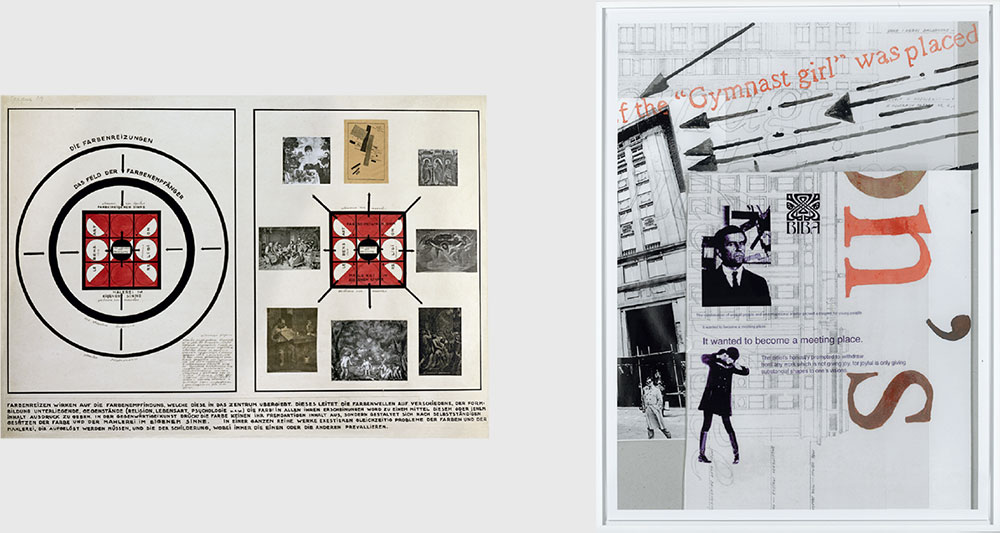
Left: Kazimir Malevich, Chart No 14: The Process of the Creative Reworking of Colour Stimuli by the Artist (1927); Paulina Olowska, 7 from the series Accidential Collages (2004)
Paulina Olowska
In 1927 Malevich travelled to Warsaw to present a series of his works including figurative and Suprematist paintings, architectural models and analytical charts. He also gave a lecture at the Hotel Polonia entitled The New Directions in Art, with his charts forming the backdrop to a discussion on Impressionism, Cézanne, Cubism, Futurism and Supermatism. In 2004 I went to see a Malevich show at the Stedelijk Museum in Amsterdam, which also included the charts — didactic visual diagrams with strong graphics and collage whose condensed themes and clear delivery of concepts served as the basis of my 2004 work Accidental Collages. Using his diagrammatic method of comparing forms and styles, I wanted to spell out my paradigm of an upcoming change of reality.
I viewed Malevich’s work as a revolutionary symbiotic way of seeing abstraction and figuration; of seeing a world that is much more simple and logical. He strongly believed that painting is a tool of social change, which encouraged me to continue on my path in the art form. I love his Self- Portrait from 1933. Wearing Renaissance clothes with flatly painted shapes of red, green, black and white, he makes a bizarre L-shaped hand gesture with his thumb up. It could be a move from an abstract dance, or a futuristic new universal sign for “hello”. The efficiency of Malevich’s gestures and symbols can be seen everywhere today — from chocolate packaging and clothing to furniture design and architecture. The figures in his Sportsmen paintings from 1928 to 1929 have a similar outline and simplification to Jan Mucharski’s 1961 neon Volleyball Player in Warsaw’s Constitution Square. Why use a plethora of colours and forms when you can present something in primary terms?
